Asphalt shingles are among the most favored roofing materials both in the Philippines and around the globe. Comprising asphalt-saturated felt or fiberglass, these shingles deliver excellent durability and resilience against harsh weather conditions, making them particularly suitable for the Philippines’ tropical climate. Additionally, asphalt shingles are celebrated for their affordability, straightforward installation, and extensive variety of styles. This comprehensive guide will help you navigate the essentials of selecting the ideal roofing material for your home.
- What Are Asphalt Shingles?
- Types of Asphalt Shingles
- Benefits of Asphalt Shingles
- Asphalt Shingles vs. Other Roofing Materials
- Sustainable and Eco-Friendly Roofing Options
- Energy Efficiency with Asphalt Shingles
- Roof Installation and Maintenance
- Roof Repair for Asphalt Shingles
- Asphalt Shingle Pricing
- Cost Analysis: Initial Investment vs. Long-Term Savings
- Suitability in Tropical Climates
- Tips for Selecting the Right Roofing Material
- Frequently Asked Questions (FAQ)
- Conclusion
1. What Are Asphalt Shingles?
Asphalt shingles are constructed from a base mat, typically made of fiberglass or organic materials, which is then coated with bitumen (asphalt) and topped with ceramic granules. These layers work together to provide waterproofing, durability, and aesthetic appeal to your roof.
Versatility and Popularity
Over the years, asphalt shingles have gained immense popularity due to their versatility and wide range of design options. They are available in various colors, shapes, and sizes, allowing homeowners to achieve different architectural styles and personal preferences without compromising on performance. Whether you’re aiming for a traditional look or a more contemporary design, there’s likely an asphalt shingle option that fits your vision. Furthermore, advancements in manufacturing have led to the development of shingles that closely mimic the appearance of higher-end materials like slate or wood, offering both aesthetic appeal and cost-effectiveness. This adaptability makes asphalt shingles a preferred choice for both residential and commercial properties across diverse climates and regions.
2. Types of Asphalt Shingles
Components of Asphalt Shingles:
- Base Mat: The foundational layer, available in fiberglass or organic types. Fiberglass mats are lighter and more durable.
- Asphalt Coating: Provides waterproofing and enhances the shingle’s strength.
- Ceramic Granules: Protect the shingles from UV rays, add color, and inhibit algae growth, thereby extending the roof’s lifespan.
Understanding the different types of asphalt shingles available can help you make an informed decision tailored to your home’s specific needs and your aesthetic preferences.
a. 3-Tab Shingles
These are the most traditional and widely used type of asphalt shingles. They feature a flat, uniform appearance and are typically more affordable, making them a popular choice for budget-conscious homeowners.
b. Architectural Shingles (Dimensional Shingles)
Architectural shingles offer a thicker profile and a more textured appearance compared to 3-tab shingles. They mimic the look of higher-end materials like slate or wood and generally come at a higher price point, providing enhanced durability and a more upscale look.
c. Luxury Shingles
Luxury shingles represent the premium end of asphalt shingle offerings. They provide superior aesthetics with intricate designs and patterns, along with exceptional durability. These shingles are ideal for homeowners seeking a high-end appearance and long-lasting performance.
3. Benefits of Asphalt Shingles
Affordability
One of the most significant benefits of asphalt shingles is their cost. They are generally less expensive than alternative roofing materials such as metal, slate, or tiles, making them accessible to a wide range of budgets.
Versatility in Design
Asphalt shingles are available in numerous colors, styles, and textures, allowing homeowners to customize the look of their roofs to match their home’s architectural style and personal preferences.
Ease of Installation
These shingles are lightweight and designed for straightforward installation, reducing labor costs and installation time. Additionally, individual shingles can be easily replaced if damaged, simplifying maintenance.
Weather Resistance
Asphalt shingles are engineered to withstand various weather conditions, offering protection against heavy rains, strong winds, UV rays, and humidity. This makes them particularly suitable for the Philippines’ volatile tropical climate.
Asphalt shingles are engineered to withstand various weather conditions, offering protection against heavy rains, strong winds, UV rays, and humidity. This makes them particularly suitable for the Philippines’ volatile tropical climate.
4. Asphalt Shingles vs. Other Roofing Materials: Pros and Cons
While asphalt shingles are a very popular option, they are certainly not the only option available. Before choosing the shingle, tile, or slate for your home, it’s essential to consider all the available options and their pros and cons. Let’s compare the benefits and downsides compared to the most common options:
Asphalt Shingles vs. Metal Roofing
When comparing asphalt shingles to metal roofing, several key differences emerge. Metal roofing is renowned for its longevity and superior resistance to extreme weather conditions, making it a robust option for areas prone to typhoons and heavy rains. In contrast, asphalt shingles offer a more affordable solution with easier installation and maintenance.
Pros:
- Cost-Efficiency: The asphalt shingle is a considerably cheaper product than metal materials while offering cheaper and easier installation, making it the hands-down more affordable choice.
- Replacements & Maintenance: No matter which material you choose, they all break down eventually. When it comes to replacing damaged parts of your roof, shingles are definitely the best option here, as damaged shingles can be easily replaced at a low cost compared to metal roofing.
- Climate Suitability: Unlike metal, asphalt shingles do not rust, which is a big benefit compared to lower-quality metal roofs which tend to suffer heavily in tropical climates due to the rain and humidity.
Cons:
- Vulnerability to Severe Weather: While shingles provide great durability for the typical tropical climate, they are not quite as adept at dealing with extreme weather–which is not all too unfamiliar to the Philippines with its regular typhoons. A quality metal roof can often resist wind uplift forces of over 140 mph, meaning metal roof panels are much less likely to lift or become dislodged. This is particularly true if the metal roof is installed with reinforced fasteners
- Higher Long-Term Cost: While the upfront costs of asphalt shingles and installation are significantly lower than metal roofing, over time metal roofing takes the price here due to its long lifespan and lower replacement frequency.
- Higher Environmental Impact: Given that metal is much easier to recycle and is often sourced from recycled materials, it’s typically the more environmentally friendly option. Asphalt shingles are bitumen-based and produced from petroleum, making them less environmentally friendly.

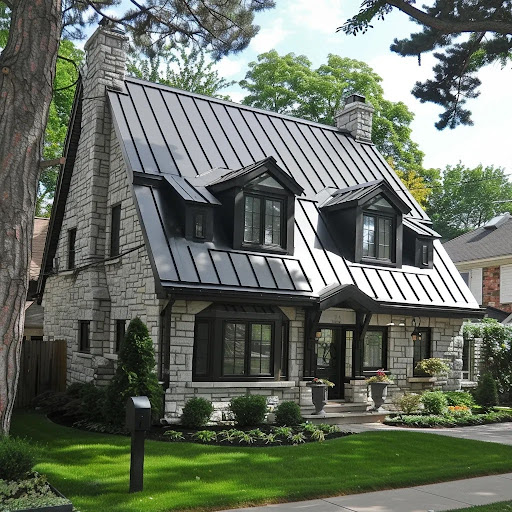
Asphalt Shingles vs. Slate Roofing
Comparing asphalt shingles with slate roofing highlights the contrast between modern and traditional materials. Slate roofing is celebrated for its natural beauty and exceptional durability, often lasting over a century with minimal maintenance. Asphalt shingles, while offering good durability, provide a more economical and versatile option suitable for a wider range of homes.
Pros of Asphalt Shingles:
- Ease of Installation: Asphalt shingles are easier and cheaper to install than slate, which requires specialized skills.
- Lower Maintenance: Asphalt shingles require less upkeep compared to the fragile nature of slate, which can crack or break.
- Design Flexibility: A wider range of colors and styles are available with asphalt shingles.
Cons of Asphalt Shingles:
- Weight: Slate roofing is heavier, providing more stability against severe weather, whereas asphalt shingles are lighter.
- Aesthetic Appeal: Slate offers a more luxurious and timeless appearance, often associated with historical and high-end properties.
- Longevity: Slate roofs can last 50 years or more, surpassing the typical lifespan of asphalt shingles.
Asphalt Shingles vs. Wood Shingles/Shakes
When evaluating asphalt shingles against wood shingles or shakes, the choice often comes down to aesthetics and maintenance preferences. Wood shingles provide a natural, rustic look and excellent insulation but require more maintenance and are susceptible to pests. Asphalt shingles offer a uniform appearance with easier upkeep and greater pest resistance.
Pros:
- Manufacturing Consistency: Asphalt shingles are manufactured to very precise standards, which ensures uniformity in quality and look. Wood shingles and wood shakes, being made out of natural wood, on the other hand may vary somewhat due to the inconsistency of natural products.
- Pest Resistance: Unlike wood, asphalt shingles are not a target of pests, such as termites or other insects, which can severely degrade wood materials and potentially invite unwanted guests to your home.
- Lower Upkeep Cost: Asphalt shingles are a more durable choice which requires less frequent upkeep than wood, which often requires sealing and other treatments to keep its durability.
- Natural Insulation: Wood is a natural insulator, which can help you save on the energy bill while also keeping your home cooler.
- Unique Aging Process: While asphalt shingles tend to look increasingly worn and unappealing as they age, wood shingles tend to age a lot more gracefully—gaining a rustic look and feel which many homeowners appreciate.
- Biodegradability: Wood shingles, being made out of natural material, are biodegradable and typically made out of sustainable sources, unlike petroleum products. This makes wood roof shingles a more attractive option for those who are environmentally conscious.
Cons:
- Natural Insulation: Wood is a natural insulator, which can help you save on the energy bill while also keeping your home cooler.
- Unique Aging Process: While asphalt shingles tend to look increasingly worn and unappealing as they age, wood shingles tend to age a lot more gracefully—gaining a rustic look and feel which many homeowners appreciate.
- Biodegradability: Wood shingles, being made out of natural material, are biodegradable and typically made out of sustainable sources, unlike petroleum products. This makes wood roof shingles a more attractive option for those who are environm
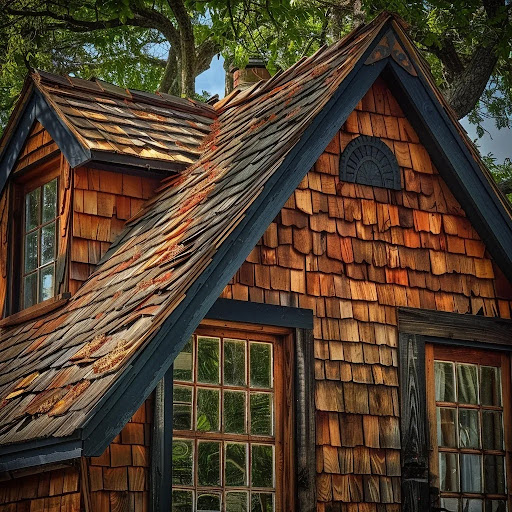
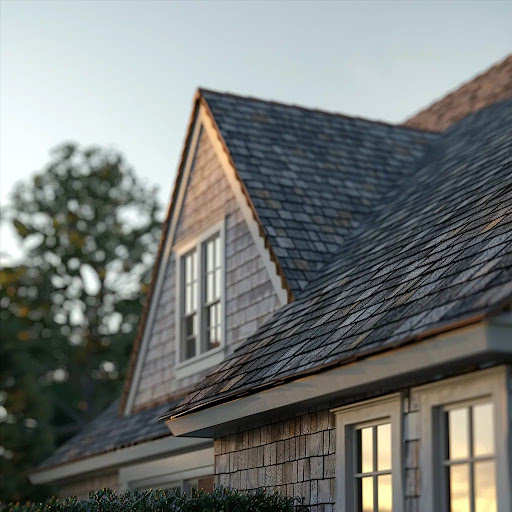
Asphalt Shingles vs. Clay or Concrete Tiles
The comparison between asphalt shingles and clay or concrete tiles brings attention to differences in weight, durability, and thermal properties. Clay and concrete tiles are exceptionally durable and offer excellent heat resistance but come with higher installation costs and structural requirements. Asphalt shingles provide a lighter and more versatile option, suitable for various roof designs.
Pros:
- Lower Structural Requirements: Because asphalt are much lighter, they do not require the same structural support as clay or concrete, which means lower construction costs.
- Flexibility in Roof Design: Asphalt shingles can be installed on all types of roofs, including roof designs with complex shapes and steep pitches, whereas tiles can be a lot more challenging to install on these types of roofs.
- Lower Maintenance in Humid Climates: In Philippine’s tropical climate, high humidity and frequent rains can lead to issues like micro-cracks and surface erosion in concrete and clay tiles when they are exposed to constant moisture.
Cons:
- Longer Lifespan of Tile: Concrete and clay tiles can often last 50 years or more with minimal maintenance, compared to asphalt shingles which usually only lasts for 20-30 years before needing replacement.
- Inherent Thermal Properties: The natural qualities of clay and concrete allows them to better reflect and absorb less heat, which helps to keep your home or property cool and bring down your energy bill.
- Resistance to Environmental Damage: While the granules in an asphalt roof shingle help make them more resistant to algae and moss growth, it can still be an issue in very humid environments such as tropical climates when the materials degrade over time, require more regular maintaining. concrete and clay tiles are significantly more resistant due to their natural properties.
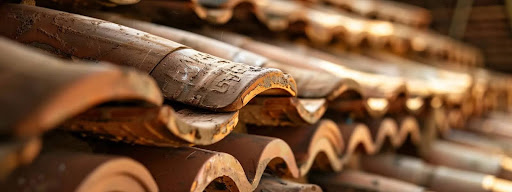

5. Sustainable and Eco-Friendly Roofing Options
Sustainability is increasingly important in the roofing industry. While asphalt shingles are traditionally viewed as less eco-friendly compared to some alternatives, there are sustainable options and practices that can enhance their environmental performance.
Recycled Asphalt Shingles
Recycled asphalt shingles are made from old shingles that have been reclaimed and processed into new roofing materials. This not only reduces waste but also minimizes the need for new raw materials, lowering the overall environmental footprint of your roofing project.
Cool Asphalt Shingles
Cool asphalt shingles are designed with reflective granules that reduce heat absorption. By reflecting more sunlight, these shingles help lower the temperature of your home, decreasing the reliance on air conditioning and reducing energy consumption.
Low-VOC Asphalt Shingles
Volatile Organic Compounds (VOCs) contribute to air pollution and environmental degradation. Low-VOC asphalt shingles are manufactured with reduced chemical emissions, making them a more environmentally responsible choice without compromising performance.
Energy-Efficient Practices
Incorporating energy-efficient practices during the installation of asphalt shingles, such as proper insulation and ventilation, can further enhance their sustainability. These practices not only improve the roof’s performance but also contribute to overall energy savings for your home.
6. Energy Efficiency and Asphalt Shingles
Energy efficiency is a critical consideration for homeowners in the Philippines, where cooling costs can be significant due to the tropical climate. Selecting the right asphalt shingles can greatly influence a building’s energy consumption.
Reflective Coatings
Applying reflective coatings to asphalt shingles can significantly reduce heat absorption. These coatings help keep indoor spaces cooler by reflecting more sunlight, thereby lowering the need for air conditioning and reducing energy bills.
Insulation Integration
Proper insulation beneath asphalt shingles plays a vital role in maintaining a stable indoor temperature. Enhanced insulation helps in reducing heat transfer from the roof to the interior, improving overall energy efficiency and comfort.
Ventilation Systems
Adequate roof ventilation is essential when using asphalt shingles. Proper ventilation systems facilitate the dissipation of heat and moisture, preventing heat buildup and reducing the strain on cooling systems. This not only enhances energy efficiency but also prolongs the lifespan of your roof by mitigating moisture-related issues.
Energy-Efficient Asphalt Shingles
Some asphalt shingles are specifically engineered for energy efficiency. These shingles incorporate technologies that enhance their ability to reflect sunlight and reduce thermal gain, contributing to lower energy consumption and improved indoor climate control.
7. Roof Installation and Maintenance
Proper roof installation is crucial for maximizing the lifespan and performance of asphalt shingles. In the Philippines’ tropical climate, professional installation ensures that roofs are securely fastened to withstand high winds and heavy rains, in accordance with the Philippine Building Code. Key aspects of roof installation include:
- Accurate Measurements: Ensuring the roof structure can support the chosen asphalt shingles without overloading.
- Proper Ventilation: Facilitating airflow to prevent heat buildup and moisture accumulation under the shingles.
- Sealing and Waterproofing: Applying high-quality sealants to prevent leaks and water damage, especially in areas prone to heavy rainfall.
- Underlayment Installation: Installing appropriate underlayment beneath the shingles to provide an additional layer of protection against moisture and improve overall roof durability.
Investing in skilled installers can mitigate potential issues and enhance the overall resilience of the roof. For professional roof installation services, consult with experienced contractors who specialize in asphalt shingle installations.
8. Roof Repair for Asphalt Shingles
Regular roof maintenance and timely repairs are essential in the Philippines to address the wear and tear caused by constant exposure to harsh weather. Common roof repair tasks for asphalt shingles include:
- Replacing Damaged Shingles: Promptly fixing or replacing torn or lifted shingles to prevent leaks and further damage.
- Fixing Leaks: Identifying and repairing any areas where water may penetrate the roof structure, ensuring the integrity of the shingles and underlying materials.
- Reinforcing Fasteners: Ensuring all roofing fasteners are secure to maintain the roof’s integrity during storms and high winds.
- Granule Loss Repair: Addressing granule loss from shingles, which can reduce their effectiveness and lifespan, by applying appropriate sealants or replacing affected shingles.
Engaging a reputable roofing contractor for routine inspections and repairs can extend the life of your asphalt shingles and safeguard your property. For reliable roof repair services, reach out to trusted professionals who understand the specific needs of asphalt shingle roofs.
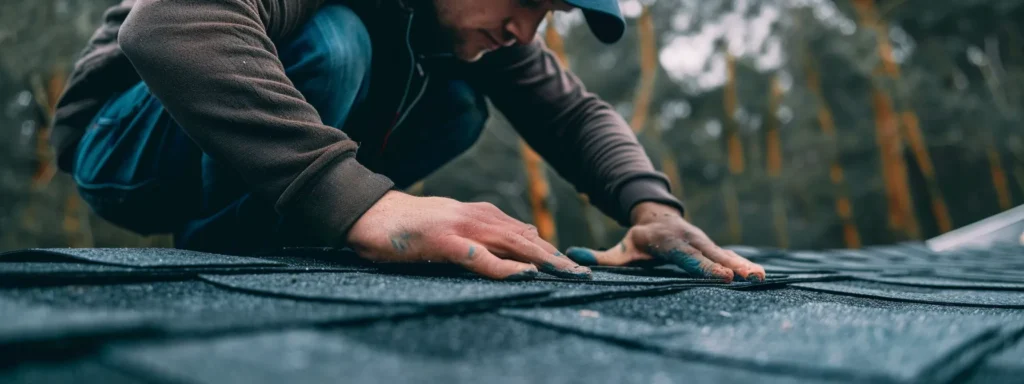
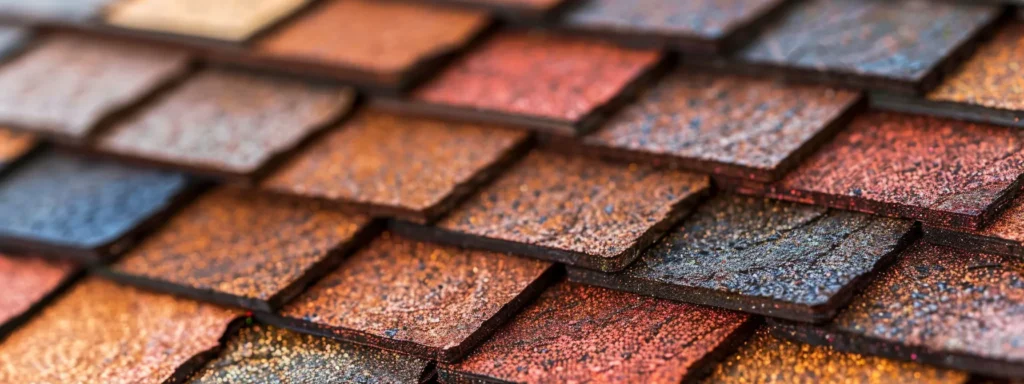
9. Asphalt Shingle Price
Understanding the cost of asphalt shingles is essential for budgeting your roofing project effectively. Several factors influence the overall price, including the type of shingles, installation complexity, and regional pricing variations.
Understanding the cost of asphalt shingles is essential for budgeting your roofing project effectively. Several factors influence the overall price, including the type of shingles, roof size, installation complexity, and regional pricing variations.
Factors Influencing Asphalt Shingle Price:
-
Type of Shingles:
- 3-Tab Shingles: Generally the most affordable option, suitable for budget-conscious projects.
- Architectural Shingles: Mid-range pricing, offering enhanced durability and aesthetic appeal.
- Luxury Shingles: The highest cost, providing premium designs and extended lifespans.
-
Roof Size and Pitch:
- Size: Larger roofs require more materials, directly increasing the cost.
- Pitch: Steeper roofs are more challenging to install, often requiring additional labor and safety measures, which can raise the overall price.
-
Installation Complexity:
- Roof Shape: Complex roof designs with multiple angles, valleys, and dormers can increase labor costs.
- Existing Roof Condition: Removing old shingles and repairing underlying structures can add to the total cost.
-
Regional Pricing:
- Local Market Rates: Prices can vary based on local demand and the availability of materials.
- Transportation Costs: Proximity to suppliers can influence the cost of shingles due to transportation fees.
Average Price Range:
The following price ranges are estimates based on the total area of the roof. Prices can vary significantly based on the factors mentioned above.
| Shingle Type | Price Range (PHP per Square Meter) | Features |
|---|---|---|
| 3-Tab Shingles | 300 – 500 | Affordable, uniform look, basic durability |
| Architectural Shingles | 600 – 900 | Enhanced texture, longer lifespan, stylish |
| Luxury Shingles | 1,200 – 2,100 | Premium designs, maximum durability, aesthetic appeal |
Example Cost Calculation:
To provide a clearer understanding, here’s an example of how the costs might be calculated for a typical residential roof:
- Roof Size: 100 square meters
- Shingle Type: Architectural Shingles
- Price Range: PHP 600 – PHP 900 per square meter
Total Cost:
- Low End: 100 sqm x PHP 600 = PHP 60,000
- High End: 100 sqm x PHP 900 = PHP 90,000
Additional Costs:
- Labor: Approximately 30-50% of material costs, depending on complexity.
- Low End Labor: PHP 18,000 (30% of PHP 60,000)
- High End Labor: PHP 45,000 (50% of PHP 90,000)
- Total Project Cost:
- Low End: PHP 60,000 (materials) + PHP 18,000 (labor) = PHP 78,000
- High End: PHP 90,000 (materials) + PHP 45,000 (labor) = PHP 135,000
Cost Comparison:
To help you better understand how asphalt shingles compare to other roofing materials in terms of pricing, here’s a comparison based on average costs per square meter:
| Roofing Material | Price Range (PHP per Square Meter) | Features |
|---|---|---|
| Asphalt Shingles | 300 – 2,100 | Varies by type; affordable to premium options |
| Metal Roofing | 1,000 – 2,500 | Durable, long-lasting, higher initial cost |
| Slate Roofing | 2,500 – 5,000 | Extremely durable, high aesthetic appeal |
| Wood Shingles/Shakes | 1,500 – 3,000 | Natural appearance, good insulation, maintenance required |
| Clay/Concrete Tiles | 1,200 – 3,000 | Durable, excellent heat resistance, heavier weight |
Budgeting Tips:
- Get Multiple Quotes: Consult with several roofing contractors to compare prices and services.
- Consider Long-Term Value: While higher-priced shingles may require less maintenance and have longer lifespans, evaluate the long-term benefits against the initial investment.
- Look for Discounts: Some suppliers or contractors may offer discounts for bulk purchases or off-season installations.
- Evaluate Financing Options: If the upfront cost is a concern, explore financing options that can spread the cost over time without the need for monthly payments.
By understanding the factors that influence asphalt shingle prices and how they compare to other roofing materials, you can make informed decisions that align with your budget and roofing needs.
10. Cost Analysis: Initial Investment vs. Long-Term Savings
When choosing roofing materials, it’s essential to consider both the initial costs and the long-term savings they offer. While some materials like metal roofing may have a higher upfront cost, their durability and energy efficiency can lead to significant savings over time.
Initial Costs
- Asphalt Shingles: Low
- Metal Roofing: High
- Polycarbonate Roofing: Medium
Long-Term Savings
- Asphalt Shingles: Moderate (requires more frequent replacement)
- Metal Roofing: High (long lifespan and energy savings)
- Polycarbonate Roofing: Moderate (energy efficiency benefits)
Balancing initial investment with potential long-term savings can help homeowners make informed decisions that align with their budget and sustainability goals.
11. Suitability of Roofing Materials in a Tropical Climate
The table below summarizes the suitability of various roofing materials for the Philippines’ tropical climate:
| Roofing Material | Durability | Cost | Maintenance | Heat Resistance | Rain Resistance | Wind/Typhoon Resistance |
|---|---|---|---|---|---|---|
| Asphalt Shingles | Moderate | Low | High | Moderate | Moderate | Low |
| Metal Roofing | High | High | Low | High | High | High |
| Polycarbonate Roofing | Moderate | Medium | Medium | High | High | Moderate |
| Clay Tiles | High | Medium to High | Low | High | High | High |
| Concrete Tiles | High | Medium to High | Low | High | High | High |
12. Tips for Selecting the Right Roofing Material
Choosing the right roofing material involves considering various factors beyond just the climate. Here are some tips to help homeowners make the best choice:
- Assess Your Budget: Determine how much you are willing to spend initially and consider the long-term maintenance costs.
- Consider Aesthetic Preferences: Select a material that complements the architectural style of your home.
- Evaluate Longevity: Choose materials that offer a long lifespan to minimize the need for frequent replacements.
- Check Local Availability: Ensure the material is readily available in the Philippines to reduce transportation costs and installation delays.
- Consult Professionals: Engaging with experienced roofing contractors can provide expert advice tailored to your specific needs. Explore our comprehensive roofing materials to find the best fit for your home.
Choosing the right roofing material involves considering various factors beyond just the climate. Here are some tips to help homeowners make the best choice:
- Assess Your Budget: Determine how much you are willing to spend initially and consider the long-term maintenance costs.
- Consider Aesthetic Preferences: Select a material that complements the architectural style of your home.
- Evaluate Longevity: Choose materials that offer a long lifespan to minimize the need for frequent replacements.
- Check Local Availability: Ensure the material is readily available in the Philippines to reduce transportation costs and installation delays.
- Consult Professionals: Engaging with experienced roofing contractors can provide expert advice tailored to your specific needs. Explore our comprehensive roofing materials to find the best fit for your home.
13. Frequently Asked Questions (FAQ)
Q1: How long do asphalt shingles last in the Philippines’ climate?
A1: Asphalt shingles typically last between 15-20 years in the Philippines, depending on the quality of materials and installation.
Q2: Are asphalt shingles suitable for areas prone to typhoons?
A2: While asphalt shingles offer good weather resistance, metal roofing may provide better protection against extreme typhoon winds. However, high-quality asphalt shingles installed correctly can still perform well in typhoon-prone areas.
Q3: Can asphalt shingles be recycled?
A3: Yes, asphalt shingles can be recycled, though the process is more complex compared to materials like metal roofing. Recycling options are available but may vary based on local facilities.
14. Conclusion
Selecting the appropriate roofing material is essential for ensuring the longevity and resilience of your home or business in the Philippines’ demanding climate. Asphalt shingles present an excellent balance of affordability, style options, and durability, making them a reliable choice for many homeowners. Their ability to withstand tropical weather conditions, coupled with ease of installation and maintenance, further solidifies their popularity.
However, it’s crucial to weigh the benefits and drawbacks of asphalt shingles against other roofing options such as metal, slate, wood, and clay/concrete tiles. Each material offers unique advantages that may better suit specific needs and preferences.
Proper roof installation and regular maintenance are vital, regardless of the material chosen. Ensuring that your roof is professionally installed and well-maintained will maximize its performance and extend its lifespan, providing peace of mind amidst the Philippines’ vibrant yet challenging weather conditions.
For expert roof installation and repair, trust Rapid Roofers to provide top-quality services tailored to your specific needs. Making an informed decision on your roofing materials not only protects your property but also enhances its aesthetic appeal and energy efficiency, ensuring a secure and beautiful home for years to come.
